Components
A Firespy fire protection system consists of:
Detection units
The SPY20 detection unit is a thermopneumatic trigger consisting of a heat-sensitive fire detection element in the form of a glass ampoule. When the ampoule is heated, an argon gas cartridge opens, causing the pressure in the detection pipe to rise and trigger extinguishing. The pressure rise can also be used to trigger an alarm.
The detection units are classified as having an ultra-fast response, with a response time (RTI) of 12 (in comparison, traditional sprinkler systems in buildings have a response time of 50).
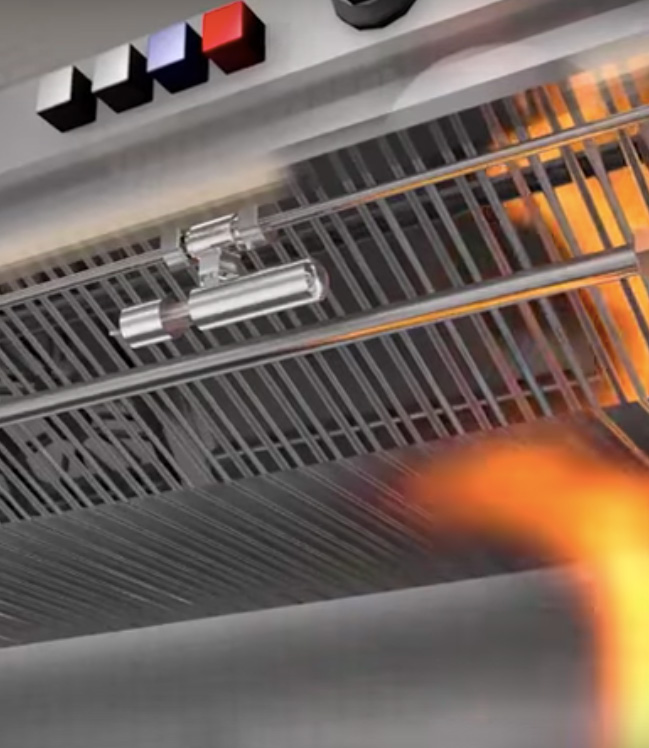
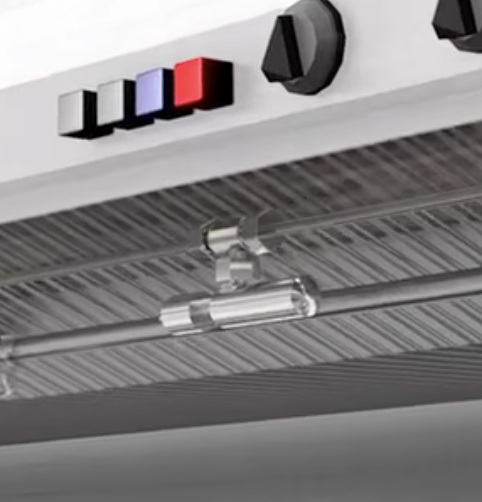
Detection pipe
The detection pipe is made of stainless steel and connects the detection units to the trigger in the extinguishing agent container. When a detection unit or the manual activation button is actuated, the pressure in the pipe increases and triggers extinguishing within a few milliseconds.
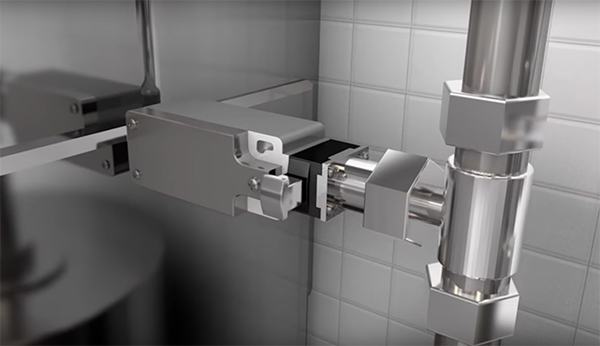
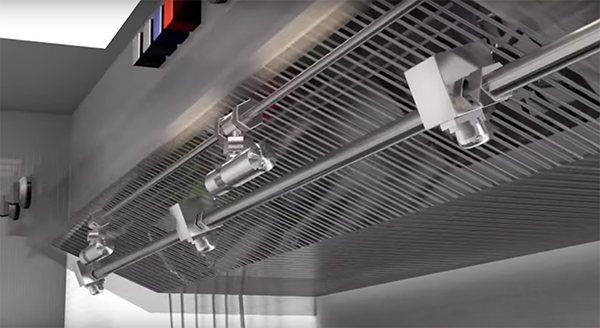
Extinguishing agent container
The Firespy system uses a 10, 20 or 50 litre extinguishing agent container. The container is made of stainless steel.
The extinguishing agent is released via a control unit consisting of a trigger and a nitrogen gas cartridge. When the pressure in the detection pipe increases, the gas cartridge inside the container is triggered and the gas forces the extinguishing agent into the extinguishing pipe.
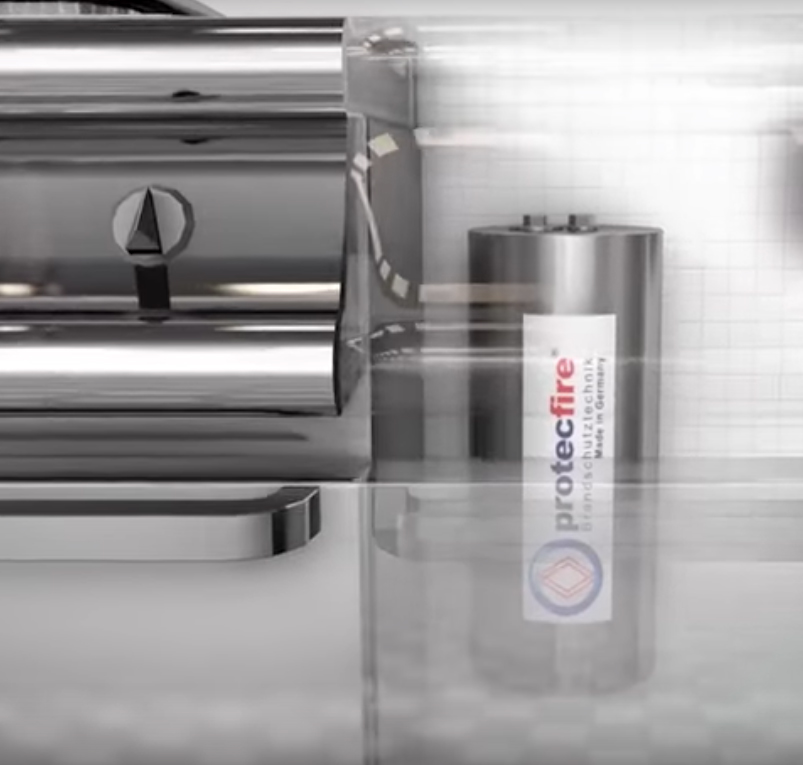
Extinguishing agent
The extinguishing agent used is FETTEX, a product specially developed for extinguishing fires caused by overheating of cooking fats.
The extinguishing agent can be used at air temperatures between -30° and +50° and can be stored in the container for ten years.
FETTEX is biodegradable (DIN EN ISO 9888).
Extinguishing pipe
The extinguishing pipe is made of stainless steel and carries the extinguishing agent from the extinguishing agent container to the atomising nozzles.

Specially developed atomising nozzles
Protecfire’s specially developed atomising nozzles distribute the extinguishing agent over the object being protected in a fine mist. This removes the oxygen supply to the fire and smothers it. The extinguishing agent then forms a protective layer on top of the hot oil, preventing reignition.
The nozzles are movable and can be adjusted to point directly at the objects being protected, providing optimal extinguishing performance.
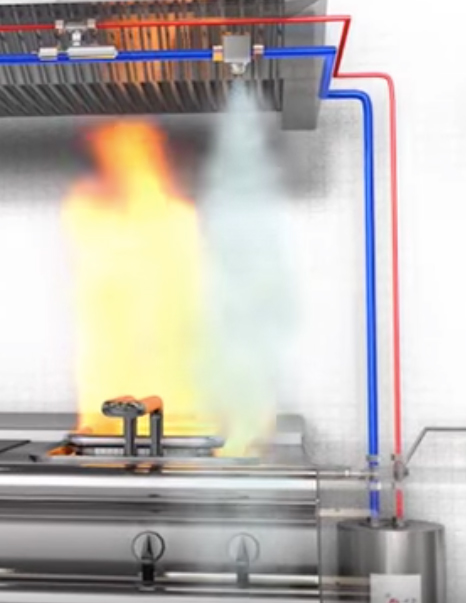
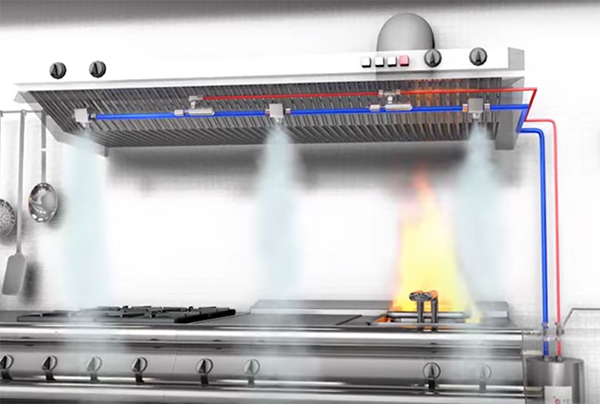
Manual pneumatic activation
The system can be triggered manually via manual pneumatic activation. The activation button is connected to the detection pipe, so pressing the button will immediately initiate extinguishing in the same way as if a detection unit was triggered.
![Homepage [EN]](/media/1554/logo.svg)









































